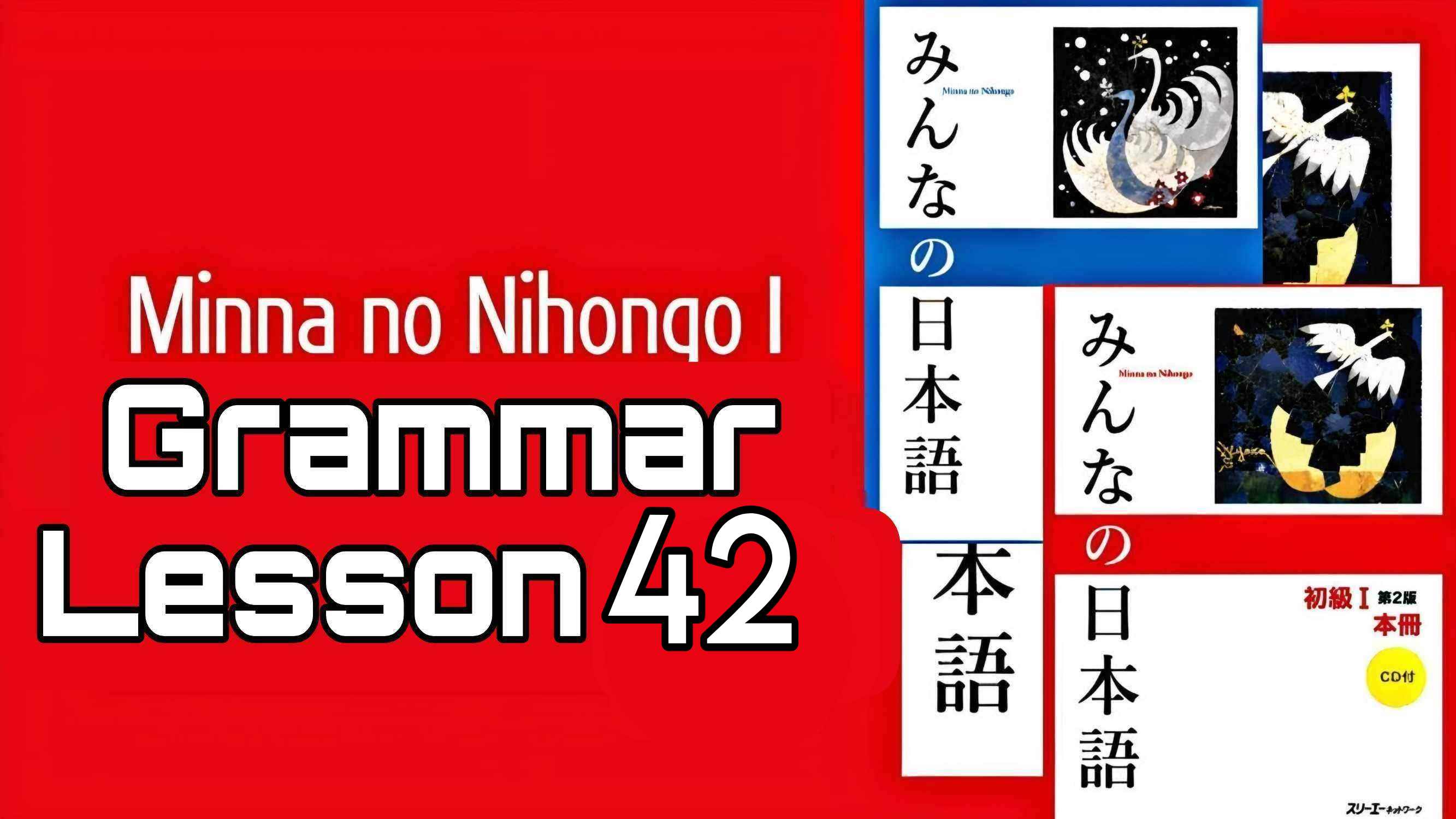
Minna No Nihongo Lesson 42 Grammar(N4)
Minna no Nihongo grammar lesson 42 today, we will review the sentence patterns that the purpose has learned. In addition, new purpose sentence patterns will be introduced in this article and learn new vocabulary terms.
1. The noun の / the verb in the verb form + ために ,~
Meaning: To ~, for ~, …
For example:
じぶんのみせをもつために、ちょきんして います
I save money to open my own store
かぞくのために、うちをたてます
I build a house for my family
Note: Distinguish [ために] and [ように] They are all about the same purpose with the meaning “To ~, for ~, …” but [ために] only goes with the verb to indicate the intention and [ように] can go with the verb to indicate intention and not indicate intention
For example:
じぶんのみせをもつために、ちょきんしています
I save money to open my own store
じぶんのみせをもつよてるように、ちょきんします
I set aside money to open my own store
In the first example, the speaker intentionally “opened a store” and used it as a goal to save money to achieve purpose. In the following example, the speaker takes the state “open store” as a goal and saves money to get close to that goal. Thereby we also see, the goal of [ために] is clearer and more specific
2. the verb in the verb form / noun + に
Usage: We add verbs, adjectives such as [つかう],[いい],[べんりだ],[やくにたつ] and [じかんがかかる] after [the verb in the verb form のに] and [noun に] to indicate purpose
Example:
このはさみは はなをきるのに つかいます
The scissors are used to cut flowers
このかばんはおおきくて、りょこうにべんりです
This bag is very large so it is convenient for traveling
でんわばんごうを しらべるのに じかんが かかりました
It took me time to find the phone number
3. Summary of speech that indicates the purpose you have learned
Noun / verb form [ます] + に いきます/ きます / かえります
Meaning: Go / go / where to go for what
For example:
わたし は にほん へ にほんご を べんきょうし に いき たい です
I want to go to Japan to learn Japanese
あした、 わたし は きょうと の おまつり に いき ます
Tomorrow I go to the festival in Tokyo
Verb form / verb form ない + ように ~
Meaning: to
Example:
しんぶんが よめるように、かんじを べんきょう します
To read the newspaper, I learned kanji
みんなが わかるように、大きな こえで 言います
To everyone hear, I said aloud.
かぜを ひかないように、セーターを きます
In order not to catch the flu, I wore a sweater
Noun の/ Verb form verb + ために ,~
Meaning: To ~, for ~, …
For example:
じぶんのみせをもつために、ちょきんして います
I save money to open my own store
かぞくのために、うちをたてます
I build a house for my family
Verb form verb / noun + に
Example:
このはさみは はなをきるのに つかいます
The scissors are used to cut flowers
このかばんはおおきくて、りょこうにべんりです
The bag is very large, convenient for traveling
でんわばんごうを しらべるのに じかんが かかりました
It took me time to find the phone number
4. Amount of words は
Usage: Indicates the minimum level that the speaker estimates
For example:
にほんで けっこんをするのために、200まんえんは いります
In Japan to get married need at least 200 million
5. Amount of words も
Meaning: To
Usage: indicating that the person who perceives the number or number is a lot
Example:
えきまで いくのに 2じかんも かかりました
It took me 2 hours to get to the station
うちをたてるのに 3000まんえんも ひつようなんです
To build a house requires to 30 million yen